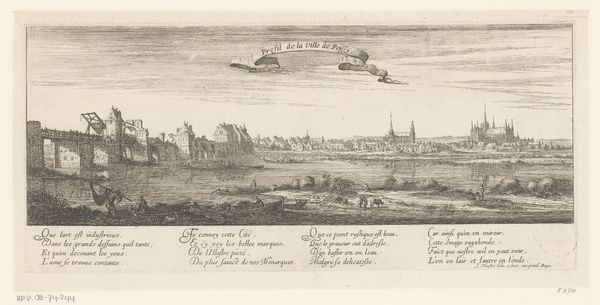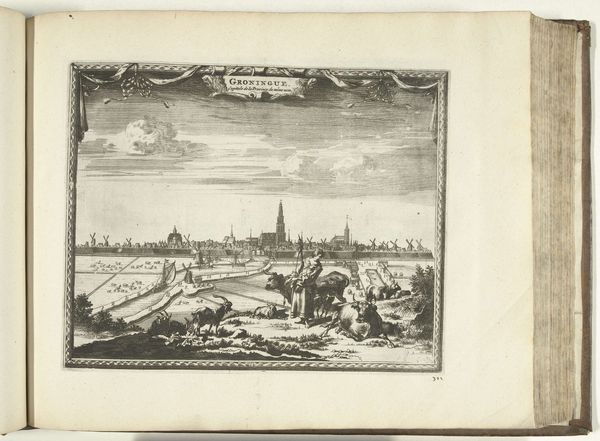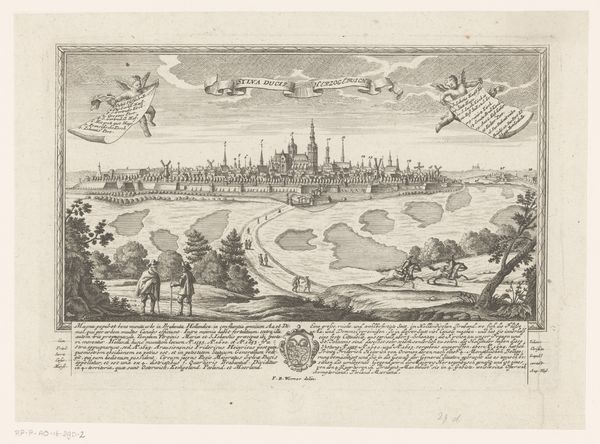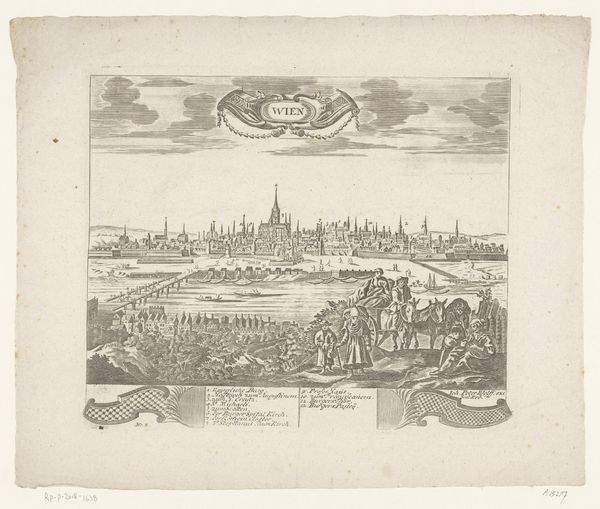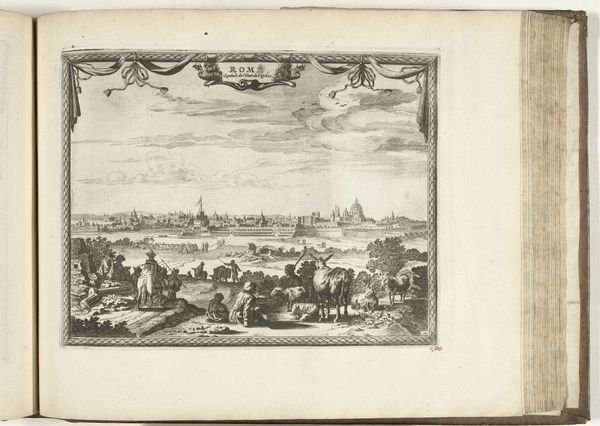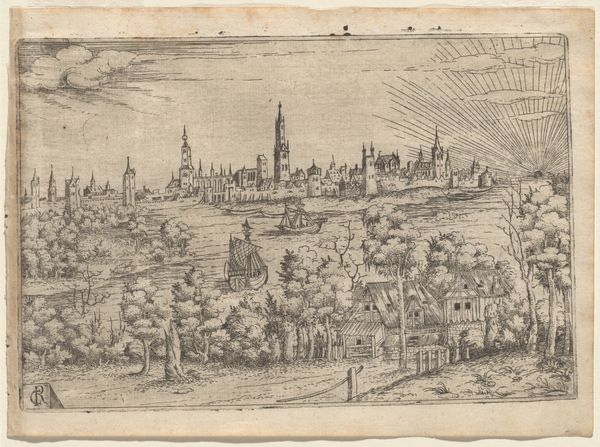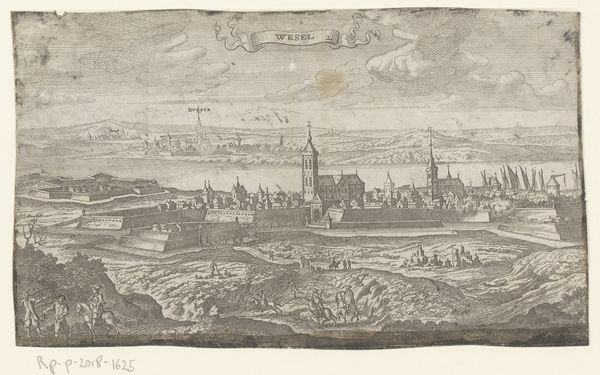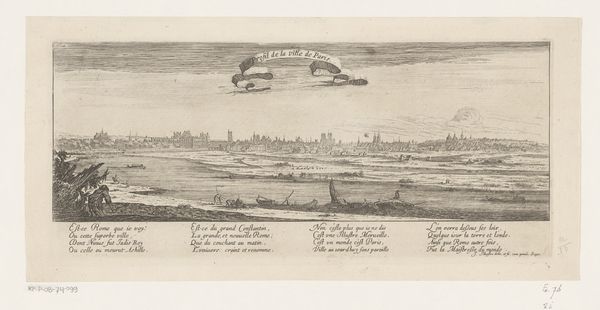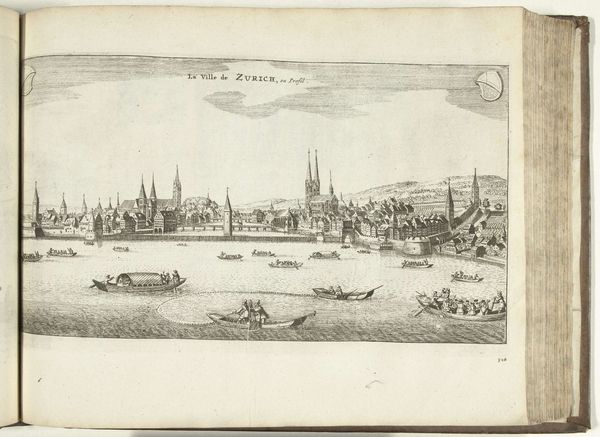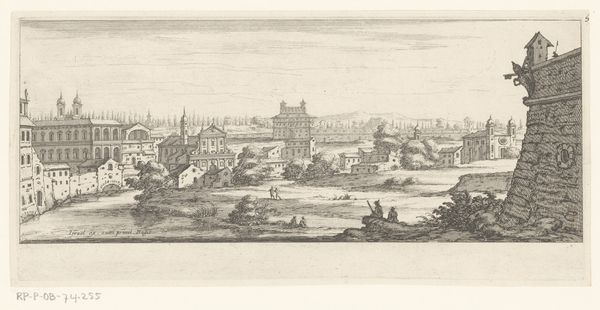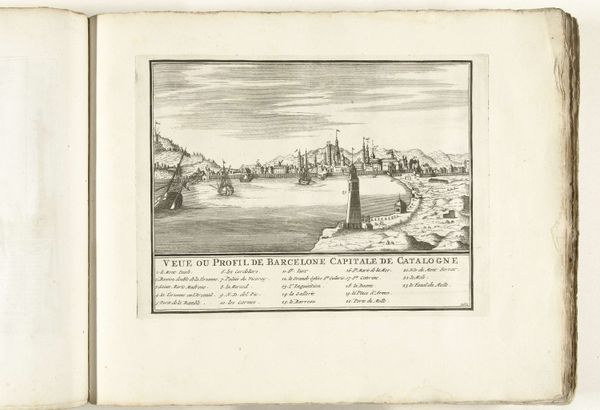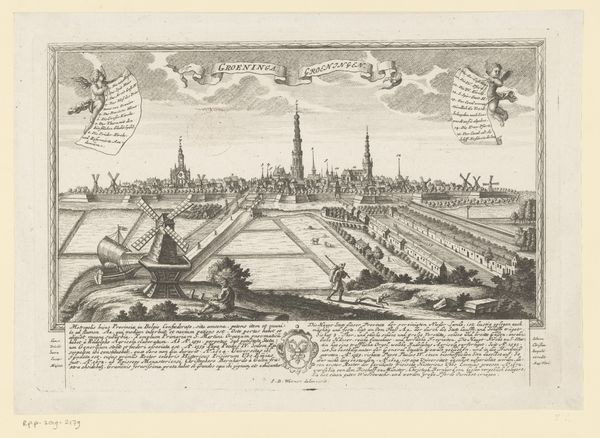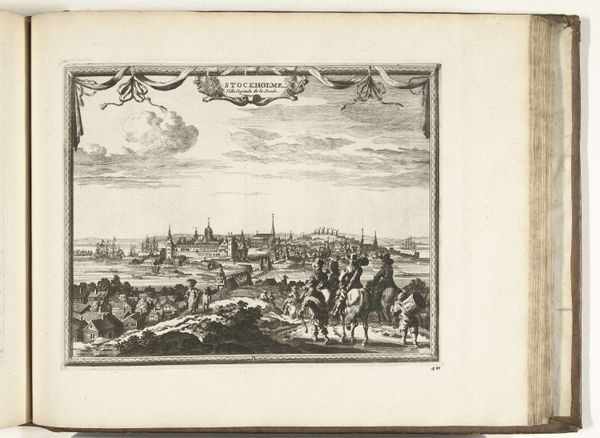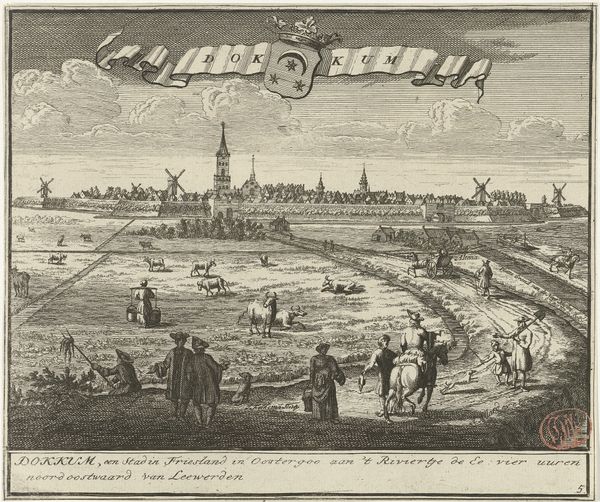
print, etching, engraving
#
baroque
# print
#
etching
#
landscape
#
cityscape
#
history-painting
#
engraving
Dimensions: height 143 mm, width 317 mm
Copyright: Rijks Museum: Open Domain
Curator: This print, "Gezicht op Saint-Denis," offers us a detailed view of the city as seen through the eyes of Israel Silvestre. Created between 1631 and 1691, it's an etching and engraving. The Rijksmuseum is its current home. Editor: Immediately, I'm struck by the almost stark emptiness that dominates the foreground, setting this ornate skyline in the distance. It creates a mood of… fragility, I think. As if this elaborate cityscape is vulnerable. Curator: Absolutely. Considering the period in which Silvestre worked, this could reflect a time of political or social instability in the region. Cityscapes at this time often carried coded messages regarding power, societal structure, or even resistance. Note the lone figures, dwarfed by the landscape. They are being framed by the landscape; they could reference class structure or the status of workers at the time. Editor: The choice of specific imagery also supports that fragility: the dark grove of trees juxtaposed with a busy town beyond suggests our impermanence, or the tenuous boundary between wilderness and civilization. Even the way Saint-Denis Cathedral pierces the sky is quite striking in its ambition, yet looks vulnerable because of its stark isolation. Curator: It's intriguing how the text below further underscores that potential impermanence you noted. Much of it reflects somber observations on loss and mortality, in ways that add context to the print, positioning the imagery within early modern discourses on death and memory. Editor: And I can't help but think about the psychological impact. These visual symbols could've served as memento mori, serving a very didactic function about death to a 17th century public grappling with massive population turnover resulting from warfare. It serves almost as a meditative aid; it encourages viewers to reflect on the transience of life as they survey a landscape with specific cultural and religious weight. Curator: Precisely. The imagery and poetic text coalesce, engaging both the eye and the mind. Silvestre seems to have captured a certain kind of paradox – that grand achievements are themselves just as susceptible to decay. Editor: Ultimately, the power lies in the combination of its striking, easily accessible composition and the potent, underlying symbols embedded within it, urging us to consider the stories within a historical setting.
Comments
No comments
Be the first to comment and join the conversation on the ultimate creative platform.
